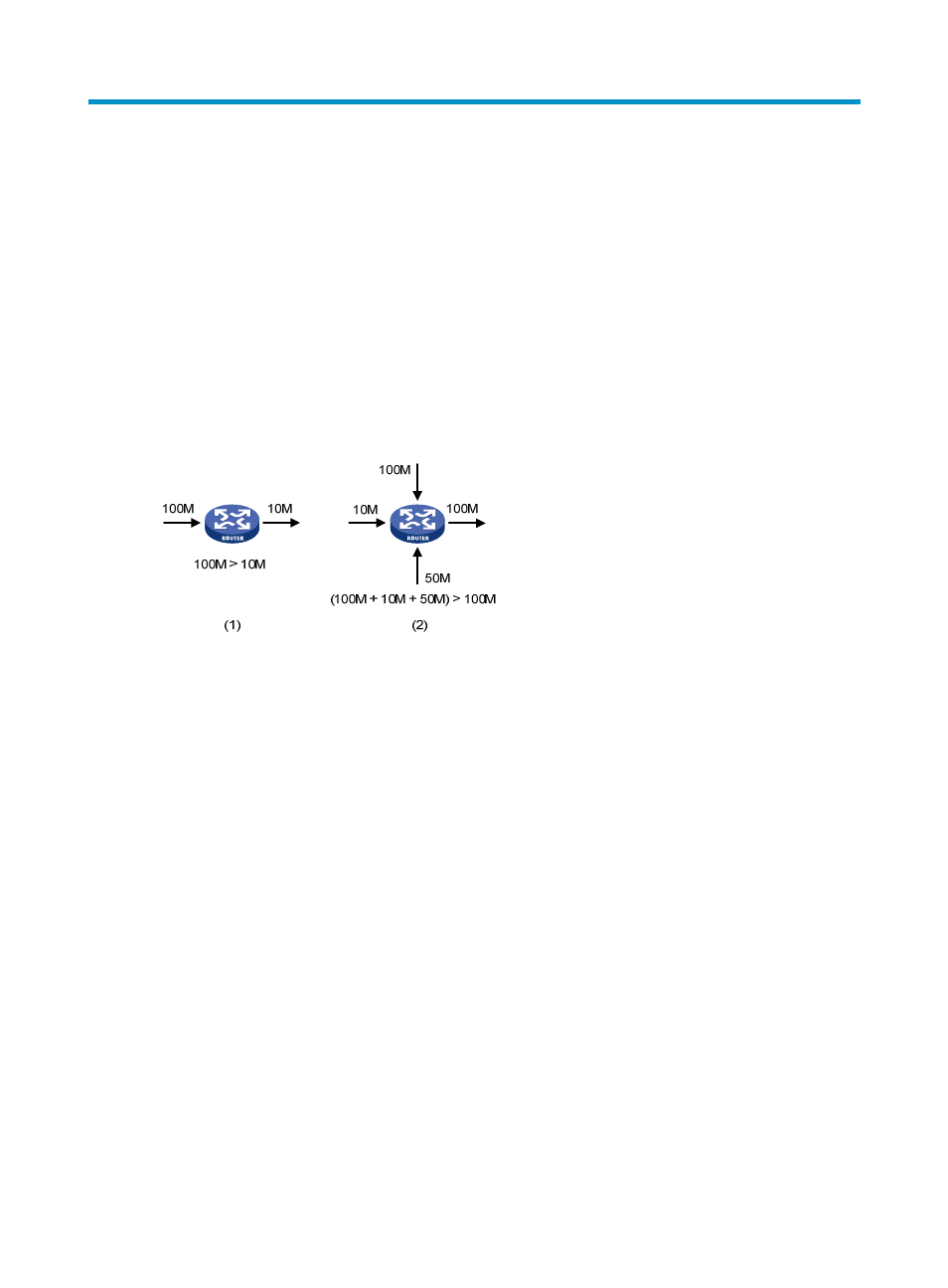Congestion management configuration, Congestion management overview, Sp queuing – H3C Technologies H3C S10500 Series Switches User Manual
Page 51: Causes, impacts, and countermeasures, Congestion management techniques

43
Congestion management configuration
Congestion management overview
Causes, impacts, and countermeasures
Network congestion degrades service quality on a traditional network. Congestion is a situation where
the forwarding rate decreases due to insufficient resources, resulting in extra delay.
Congestion is more likely to occur in complex packet switching circumstances.
shows two
common cases:
Figure 14 Traffic congestion causes
Congestion can bring the following negative results:
•
Increased delay and jitter during packet transmission
•
Decreased network throughput and resource use efficiency
•
Network resource (memory, in particular) exhaustion and system breakdown
Congestion is unavoidable in switched networks and multi-user application environments. To improve the
service performance of your network, you must take proper measures to address the congestion issues.
The key to congestion management is defining a dispatching policy for resources to decide the order of
forwarding packets when congestion occurs.
Congestion management techniques
Congestion management uses queuing and scheduling algorithms to classify and sort traffic leaving a
port. Each queuing algorithm addresses a particular network traffic problem, and has a different impact
on bandwidth resource assignment, delay, and jitter.
Queue scheduling processes packets by their priorities, preferentially forwarding high-priority packets.
The following section describes Strict Priority (SP) queuing, Weighted Fair Queuing (WFQ), Weighted
Round Robin (WRR) queuing, SP+WRR queuing, and SP+WFQ queuing.
SP queuing
SP queuing is designed for mission-critical applications that require preferential service to reduce the
response delay when congestion occurs.
